Living on a farm typically means living in an area poorly serviced by internet providers. In my case (or my parents to be precise), our house is located at the end of a private lane, 500 metres from a main road and about 1.5km from the local exchange. Our current internet connection is a ADSL2+ line supplied by Eir. Due to our distance from the local exchange, our download speed is limited to 17mbps and our upload speed limited to 765kbps. Yep, 0.765mbps.

Uploading photos or sending email attachments is nearly impossible. Working from home is also a no-go. So, what are our options?
Fibre
Fibre to the cabinet (FTTC) is available in our area but unfortunately since we’re the only house at the end of a private lane, we’re just outside the planned rural fibre connection boundary (we’re about 100 metres shy of the boundary line). I’ve tried contacting Eir/OpenEir to see if we could get a connection but they said it’s not happening. I’ve also considered laying our own cable to the pole at the road and paying Eir for a connection into the distribution point. Expensive (€1000~), but for a reliable connection it might be worth it. After a few phone calls and emails to providers, it turns out even if we did bring our own cable to the road, the distribution point doesn’t have capacity to add another connection. Each slot in the distribution point is assigned to a specific Eircode. These slots must remain allocated to their designated Eircode as they form part of the 300K houses that OpenEir identified commercially viable, even if the service is never subscribed to. In return, the Government agreed to remove each of these subscribers from the National Broadband Plan. The yellow marker below is our property, the light green area is the FTTC boundary (enabled) and the blue markers are connections that will soon be enabled.
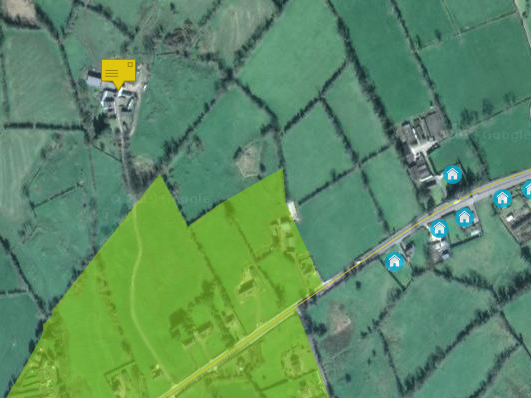
Wireless
I’m usually quite skeptical of any wireless broadband solutions. This skepticism stems from working in a computer shop during college and hearing all the complaints from customers about how terrible their experience was with wireless broadband (with services such as WiMax). But that was 4 years ago, and now a newer WiMax standard has been adopted by most providers.
TD LTE
Net1 is the nearest WiMax provider in relation to our house. Their antenna is around 10km away. We’re a reasonable distance from the transmitter but the key factor is line of sight. Unfortunately, our house is at the foot of a mountain and sits in a hollow. According to the Net1 site, the download speed is 50mbps and upload speed is 20mbps with a daily limit of 25GB.
4G/LTE
Mobile network speeds have improved substantially over the past few years. The theoretical limit for 4G LTE is 150mbps down and 50mbps up, and LTE+ is 300mbps down and 150mbps up. Pretty impressive. The carrier with the best reception in our area has always been Vodafone. There’s two masts nearby, one in the local town and one on a nearby mountain. Vodafone offer a 4G home package for €45 a month with a monthly limit of 150GB. It sounds good but the actual speed and QOS I’m not so sure of.
Some testing
Before making any switch, I decided to collect some data on our current Eir connection to benchmark with. I setup a script on a Raspberry Pi to run a speed test every hour and upload the results to Google Drive. I ran this script for 12 days. The results are below:
- Average download : 11.94mbps
- Average upload : 0.69mbps
Vodafone
My mobile phone plan is with Vodafone, so I decided to run some basic speed checks to get a baseline of what we can expect. From inside the house I’m getting a download of 3.82mbps and upload of 0.59mbps. According to Network Cell Info Lite I’m connected to a HSPA+ network.
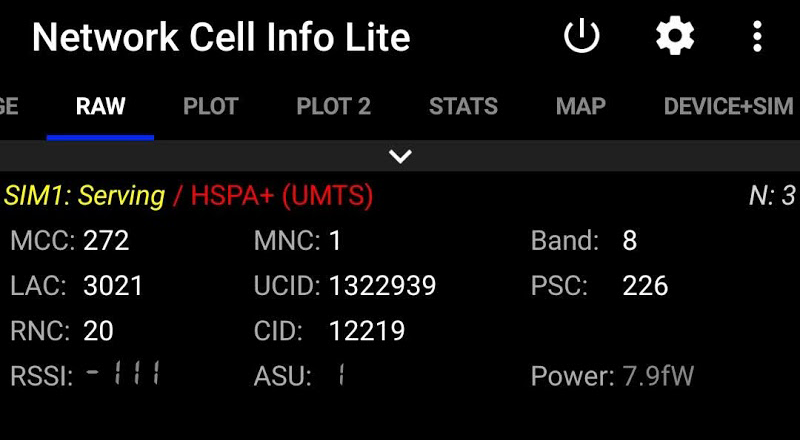
It doesn’t look very promising. HSPA+ has a theoretical limit of 42mbps up and 22mbps down. Let’s have a look at the mast capabilities on Comreg website. According to the map, one of the nearby masts (30850050) is LTE compatible. Why aren’t we picking it up? Maybe we’re in the wrong position. Time to gain some height and test again.
Roof top testing™
Living on a farm has some advantages, and one of those is tall sheds. After running another speed test on top of one of these sheds, the results are starting to look a lot better (85.4mbps down and 19.8mbps up). It also looks like I’m connected to the LTE+ (advanced) mast (30850050). Great!

Data usage
Before making the move it would be good to know what our typical usage (upload/download) is per month. It turns out Eir provide this information on their user dashboard. The dashboard only provides information for the last 4 months but it’s enough to give us a rough idea of our usage. Between February and May we used an average of 35GB per month (upload and download).

Next steps
Vodafone’s 4G home package with 150GB a month allowance seems like the best option, and there’s a 2 week cooling-off period that allows cancellation no questions asked.
Vodafone trial
Vodafone provides a Huawei B528 router with their home 4G package. It’s pretty simple to setup, just put the sim in and wait for it to establish a connection. We have 2 weeks to evaluate Vodafone’s service so again I’m going to setup the Raspberry Pi and run some speed tests. To find the best location for 4G reception in the house, I moved the router around multiple spots and ran speed tests from my phone. Here’s what 2 weeks worth of speed tests look like:
- Average download : 52.93mbps
- Average upload : 9.35mbps
The results are certainly a lot better than the Eir landline, but significantly lower than my rooftop tests™. We decided to cancel the Eir contract and keep the Vodafone modem. Let’s see how we can improve the 4G speed even further.
Antenna
Height seems to be the crucial factor with our 4G setup. The Huawei B528 has two TS9 connections allowing for an external antenna. Vodafone LTE operates on the 800/1800MHz band so I’m looking for an antenna that covers those frequencies, and since I already know exactly where mast is located, I’m going to go with a directional antenna. After some research I’ve narrowed the antennas down to 2 options:
- Poynting Cross Polarised 4G Omni LTE Antenna XPOL-A0001 (€85~ incl. delivery)
- Poynting Cross Polarised High gain 4G Panel LTE MIMO Antenna XPOL-2 (€160~ incl. delivery)
The main difference between the two antennas (besides the price) is the gain. The XPOL-A0001 max gain is 2.5 dBi while the XPOL-2 max is 9 dBi. I’ve decided to go with the XPOL-A0001 since my previous rooftop tests showed decent results with a little height and it’s half the price of the XPOL-2. I’ve also read that a high gain antenna can cause issues when the signal is already quite strong.
Antenna setup
I’ve decided to mount the XPOL-A0001 on a mast on top of a chimney and then wire it down into the attic.
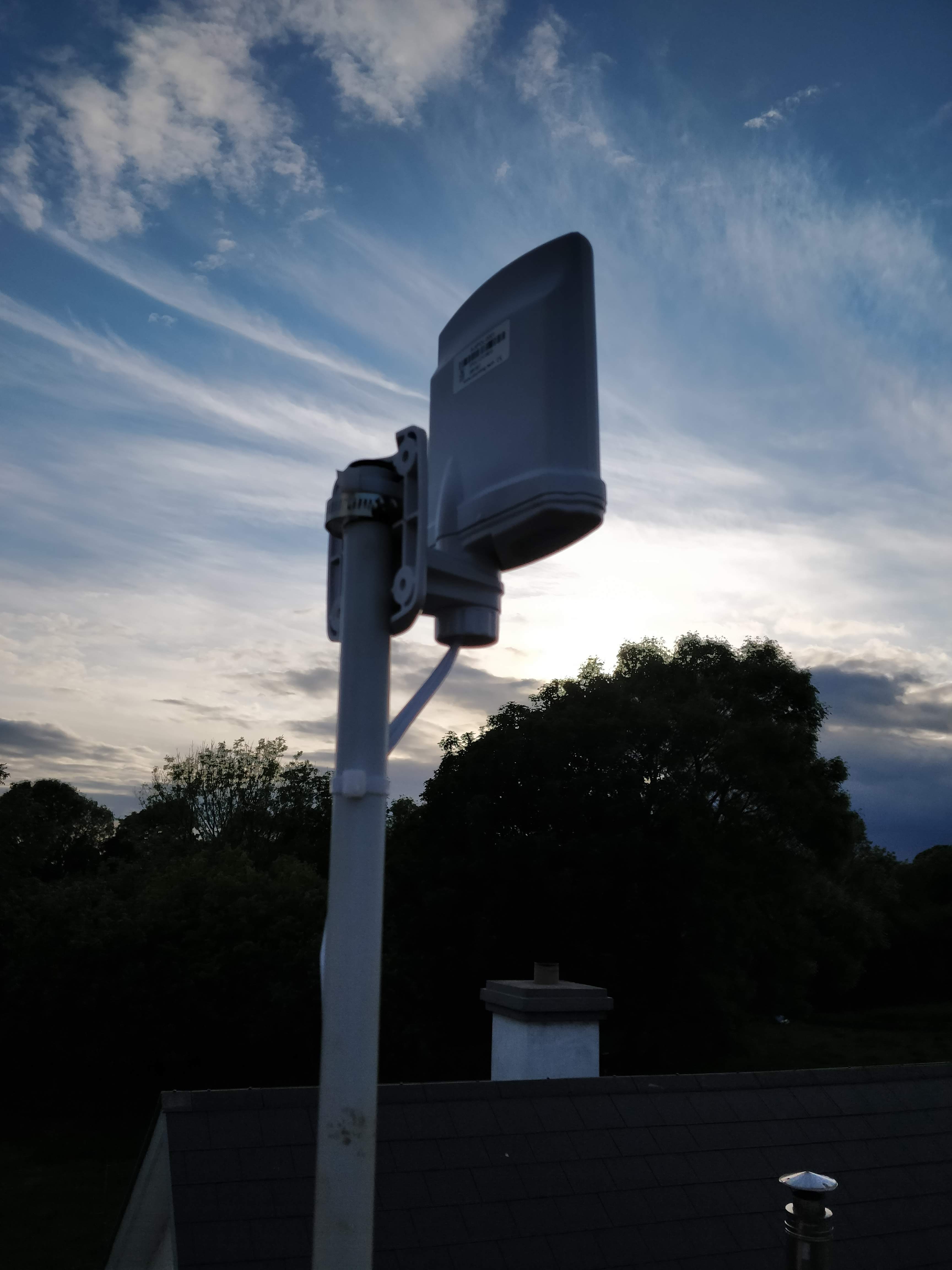
The antenna comes with two 5m cables that need to be connected to the modem. Both cables are terminated with male SMA connectors. The Huawei B528 has two TS9 connectors for the antenna so I bought two SMA to TS9 adapters on AliExpress.
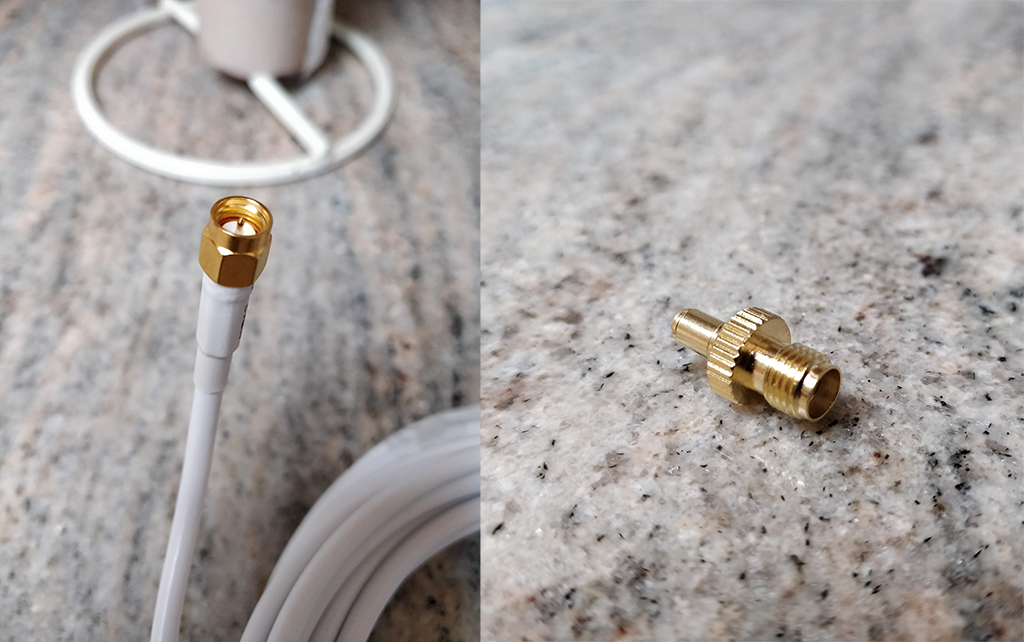
After mounting the antenna and connecting to the modem, I logged into the Huawei modem home page (http://192.168.8.1) and changed the antenna source to external.
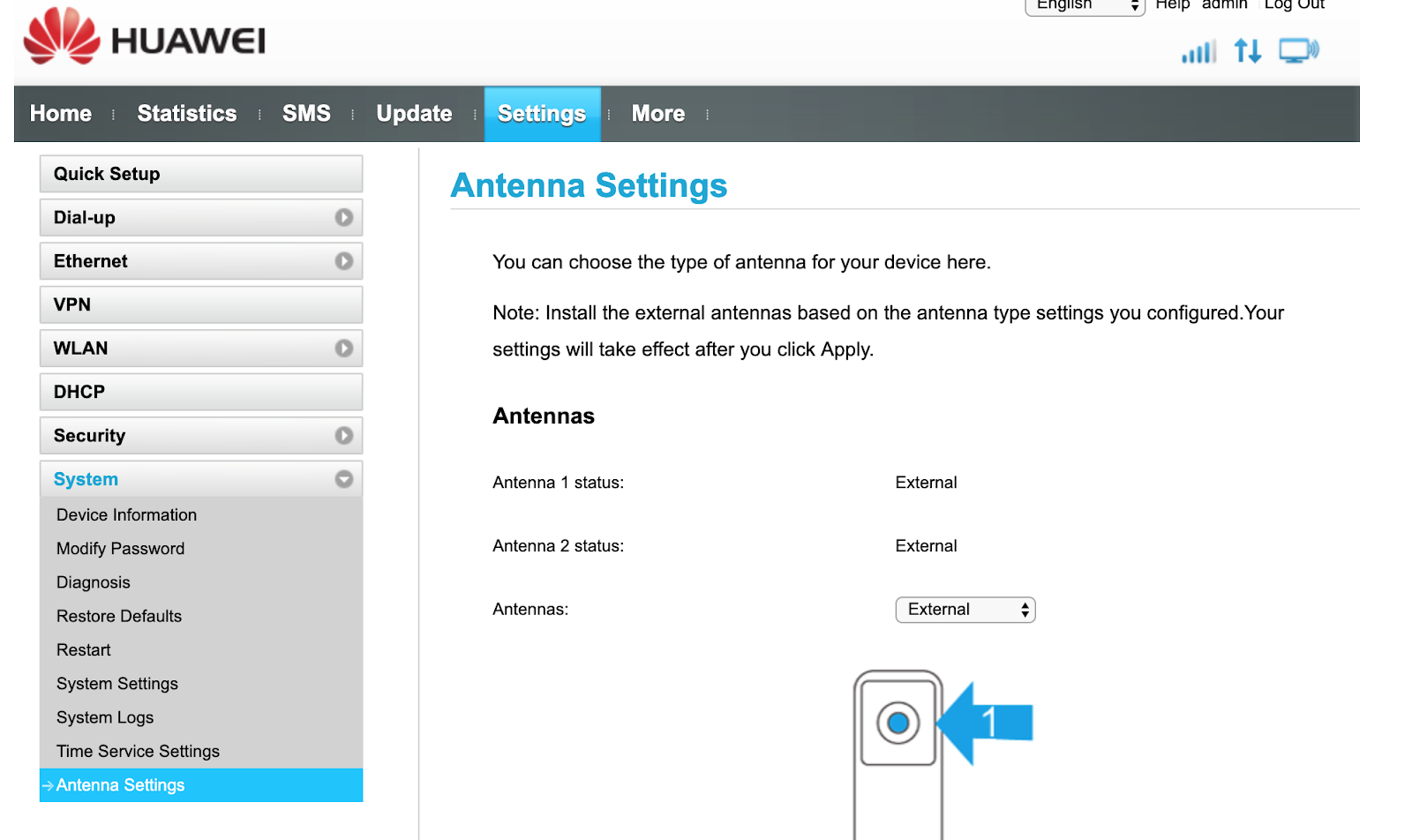
After restarting the modem, the connection seems to be working fine. Now to make sure we’re connecting to the right mast. The “Device Information” section shows us our current connection details.
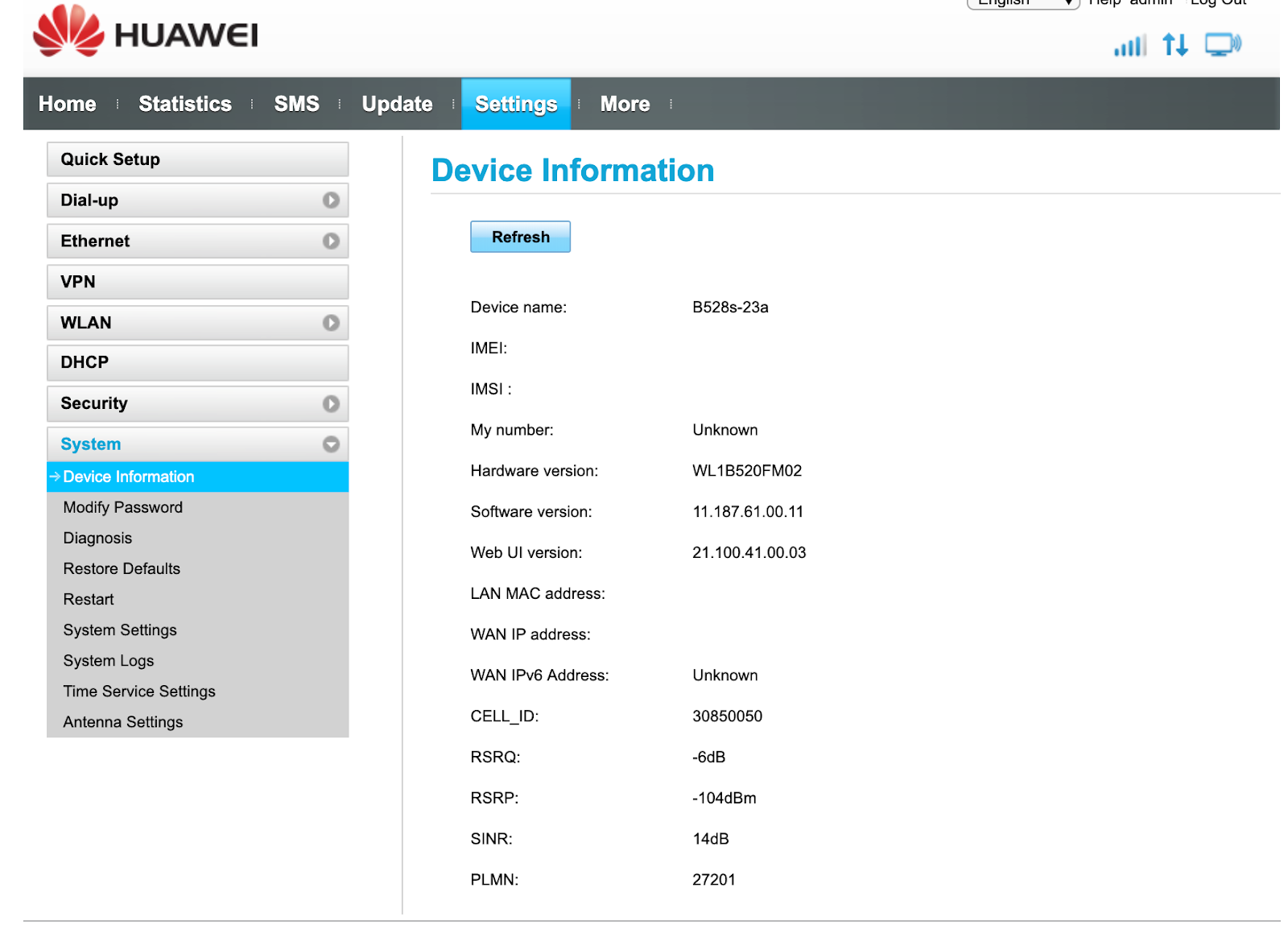
The CELL_ID field is the mast we’re currently connected to, and it looks like we’re connected to the correct mast (30850050). Another useful field here is RSRP, typically the closer this is to 0, the better your signal and speeds are. After slightly moving the antenna left/right and monitoring the RSRP value, the optimum value we get is around -100 dBm.
Again we want to test to see how much (if any) of an improvement the antenna makes. Here’s what 2 weeks worth of speed tests look like:
- Average download : 76.06mbps
- Average upload : 22.2mbps
The upload speed varies a lot. Although not perfect, it’s an improvement over our original 0.765mbps.
Conclusion
Switching to a 4G connection provided a 6x increase in download speeds and 32x improvement in upload speeds. What does this mean in real terms? Well, my parents can somewhat reliably watch Netflix, share photos/videos with myself and my brothers and download/upload large files without waiting hours. Myself and my two brothers can work from home when we visit. Maybe one day we will actually get a reliable service provided by the National Broadband Plan, but it’s not something we’re banking on. The NBP is spread over a 25 year period and regardless of who we ask, no one can say with confidence when our line will get upgraded. For now, we have a somewhat decent connection at a decent price.